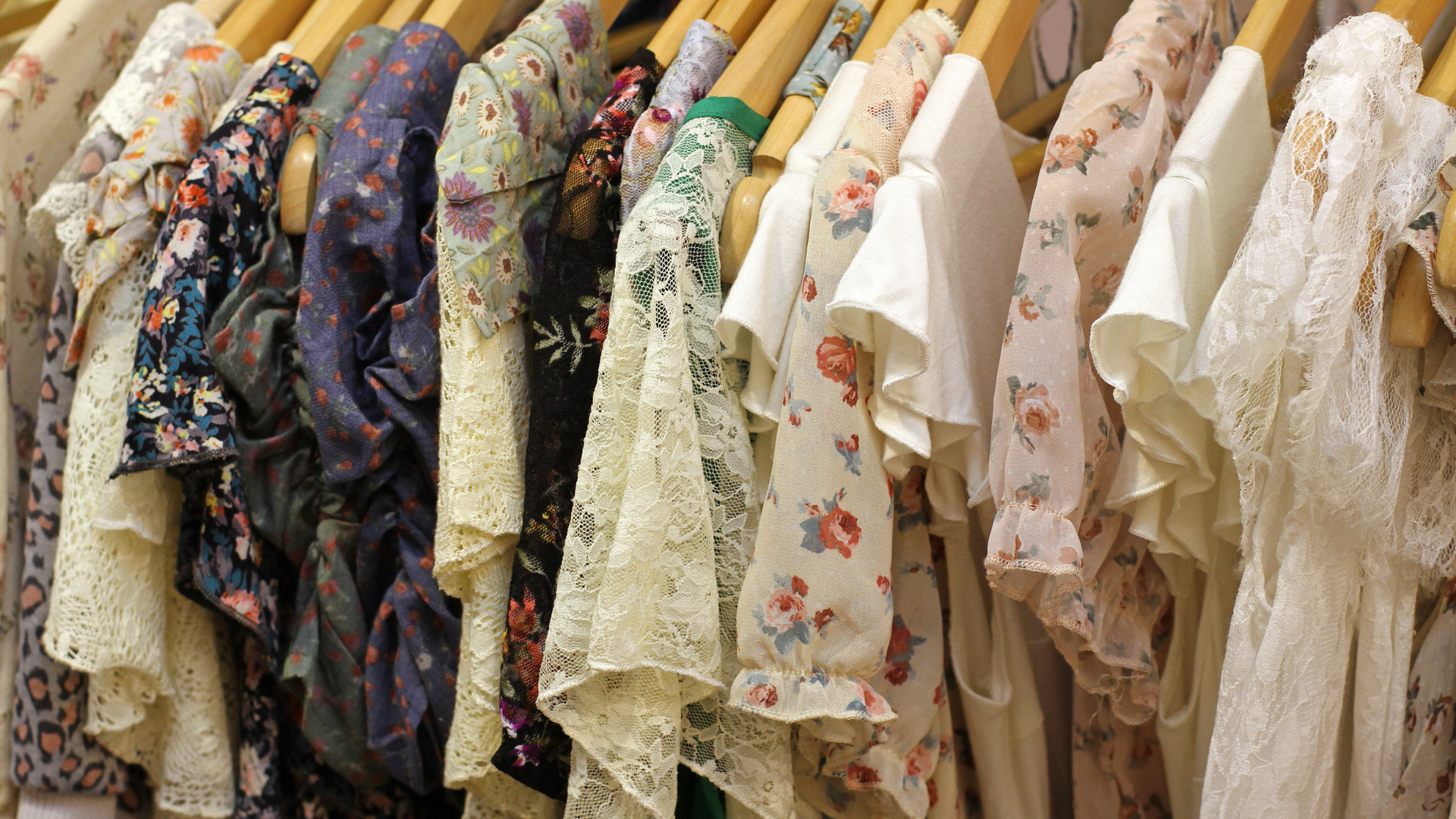In today’s fast-paced world, fashion trends shift rapidly, and consumers often find themselves caught up in the allure of fast fashion. The constant churn of new styles at bargain prices can be tempting, but this approach comes with hidden costs that go beyond the initial price tag. “The Hidden Costs of Fast Fashion: How Tailored Clothing Saves You Money in the Long Run” explores the deeper financial implications of fast fashion and how investing in tailored clothing can offer long-term savings and value.

Introduction
Fast fashion has revolutionized the way we shop, offering a seemingly endless array of trendy clothing at affordable prices. This model emphasizes quantity and speed, with new collections hitting the shelves regularly. However, beneath the surface of this seemingly cost-effective shopping strategy lie hidden expenses that can significantly impact both your wallet and the environment. “The Hidden Costs of Fast Fashion: How Tailored Clothing Saves You Money in the Long Run” will delve into these hidden costs and highlight the financial and personal benefits of opting for tailored clothing.
The Illusion of Low Prices
Fast fashion is characterized by its low prices and quick turnaround times. Retailers produce clothing in massive quantities, relying on economies of scale to keep costs down. While this might seem like a great deal, the reality is that the low prices come with trade-offs.
The Quality Compromise
One of the primary reasons fast fashion is inexpensive is that the quality of the materials and construction is often compromised. “The Hidden Costs of Fast Fashion: How Tailored Clothing Saves You Money in the Long Run” examines how the use of cheaper fabrics and less durable stitching results in garments that wear out quickly. As these items deteriorate, they need to be replaced more frequently, leading to higher long-term costs.
The Cost of Disposability
Fast fashion encourages a cycle of disposal and replacement. With new trends emerging rapidly, consumers are often tempted to discard their old clothing in favor of the latest styles. This disposability not only contributes to waste but also means that consumers are frequently purchasing new items, adding up costs over time. “The Hidden Costs of Fast Fashion: How Tailored Clothing Saves You Money in the Long Run” explores how this cycle of consumption ultimately leads to higher spending.
The Environmental Impact
The environmental toll of fast fashion is substantial, with numerous studies highlighting its detrimental effects. “The Hidden Costs of Fast Fashion: How Tailored Clothing Saves You Money in the Long Run” will discuss the environmental consequences of fast fashion and how tailored clothing presents a more sustainable alternative.
Pollution and Waste
Fast fashion contributes to pollution through the use of synthetic materials and the production process itself. Factories often release harmful chemicals into waterways, and the massive amounts of textile waste generated are a significant environmental concern. Tailored clothing, made with higher-quality materials and produced in smaller quantities, has a smaller environmental footprint.
Resource Depletion
The production of fast fashion requires vast amounts of water and energy, contributing to resource depletion. In contrast, tailored clothing often utilizes more sustainable practices and materials, reducing overall resource consumption. “The Hidden Costs of Fast Fashion: How Tailored Clothing Saves You Money in the Long Run” emphasizes how choosing tailored options can be a more environmentally responsible choice.
The Ethical Implications

Fast fashion is also associated with ethical concerns, particularly in regard to labor practices. “The Hidden Costs of Fast Fashion: How Tailored Clothing Saves You Money in the Long Run” will explore these ethical issues and how tailored clothing offers a more responsible alternative.
Labor Exploitation
Many fast fashion retailers rely on low-cost labor in developing countries, where workers may face poor working conditions and inadequate wages. The drive for quick production and low costs often results in exploitative practices. Tailored clothing, often produced in smaller, more transparent operations, supports fair labor practices and ensures better working conditions.
Fair Trade and Local Production
Opting for tailored clothing can also support local artisans and fair trade practices. By choosing custom clothing, consumers can contribute to ethical production methods and support local economies. “The Hidden Costs of Fast Fashion: How Tailored Clothing Saves You Money in the Long Run” highlights how investing in tailored garments aligns with ethical consumption.
The Financial Benefits of Tailored Clothing
While the initial cost of tailored clothing may be higher than fast fashion, the long-term financial benefits are significant. “The Hidden Costs of Fast Fashion: How Tailored Clothing Saves You Money in the Long Run” will detail how investing in tailored clothing can lead to substantial savings over time.
Durability and Longevity
Tailored clothing is crafted with high-quality materials and expert craftsmanship, resulting in garments that last longer than their fast fashion counterparts. This durability means that tailored pieces do not need to be replaced frequently, reducing overall spending. “The Hidden Costs of Fast Fashion: How Tailored Clothing Saves You Money in the Long Run” explains how this long-term value outweighs the initial investment.
Timeless Style
Tailored clothing often features classic, timeless designs that remain stylish beyond seasonal trends. By investing in versatile, well-made pieces, consumers can build a wardrobe that does not require frequent updates. This approach contrasts with the fast fashion cycle, where constantly changing trends lead to more frequent purchases.
Custom Fit and Reduced Alterations
One of the key benefits of tailored clothing is the perfect fit, which reduces the need for subsequent alterations. Fast fashion garments often require additional tailoring to achieve a proper fit, adding to the overall cost. “The Hidden Costs of Fast Fashion: How Tailored Clothing Saves You Money in the Long Run” highlights how custom fit eliminates this extra expense.
Building a Sustainable Wardrobe
Creating a wardrobe that prioritizes quality over quantity is both financially and environmentally beneficial. “The Hidden Costs of Fast Fashion: How Tailored Clothing Saves You Money in the Long Run” offers practical tips on building a sustainable wardrobe with tailored clothing.
Investing in Key Pieces
Focus on investing in key tailored pieces that can serve as the foundation of your wardrobe. Classic items such as tailored blazers, suits, and coats offer versatility and long-term value. By selecting high-quality, timeless pieces, you can avoid the need for constant replacements and updates.
Caring for Your Clothing
Proper care and maintenance of tailored clothing can extend its lifespan. Follow care instructions, store garments properly, and address minor repairs promptly to keep your tailored pieces in excellent condition. “The Hidden Costs of Fast Fashion: How Tailored Clothing Saves You Money in the Long Run” provides guidance on how to care for tailored clothing to maximize its durability.
Embracing Minimalism
Adopt a minimalist approach to fashion by focusing on fewer, high-quality items rather than a large quantity of lower-quality pieces. Tailored clothing aligns with this approach, offering a more sustainable and cost-effective way to build a wardrobe.
The Future of Fashion: Tailoring and Sustainability
As consumers become more aware of the impact of their clothing choices, there is a growing shift towards sustainable fashion. “The Hidden Costs of Fast Fashion: How Tailored Clothing Saves You Money in the Long Run” explores how tailoring is playing a role in this movement.
Technological Innovations
Advancements in technology are making tailored clothing more accessible and efficient. Innovations such as 3D body scanning and virtual fitting rooms are enhancing the tailoring process, allowing for greater precision and customization. These technologies contribute to the value and longevity of tailored garments.
The Rise of Ethical Fashion
The trend towards ethical fashion is gaining momentum, with consumers increasingly seeking out brands that prioritize sustainability and fair labor practices. Tailored clothing fits well within this trend, offering a responsible choice that supports ethical production methods.
FAQ’S
What is fast fashion?
Fast fashion refers to the rapid production of inexpensive clothing that mirrors current fashion trends. Retailers produce these garments quickly to meet consumer demand, often at the expense of quality and ethical labor practices.
Why are the prices of fast fashion so low?
The prices of fast fashion are low because manufacturers use cheaper materials and mass-produce garments in large quantities. This cost-cutting approach often results in lower quality, which means the clothes wear out faster and need to be replaced more often.
How does fast fashion impact the environment?
Fast fashion contributes to significant environmental damage through pollution, excessive water and energy use, and large amounts of textile waste. The quick turnover of trends also encourages a disposable culture, leading to more waste.
How can I build a sustainable wardrobe with tailored clothing?
To build a sustainable wardrobe, invest in key tailored pieces that offer versatility and timeless style. Focus on quality over quantity, care for your clothing properly, and embrace a minimalist approach by choosing fewer, well-made items.
How can I start transitioning from fast fashion to tailored clothing?
Begin by investing in a few key tailored pieces that can serve as the foundation of your wardrobe. Prioritize quality over quantity, take proper care of your clothing, and gradually replace fast fashion items with tailored alternatives as needed.
Conclusion
“The Hidden Costs of Fast Fashion: How Tailored Clothing Saves You Money in the Long Run” highlights the numerous benefits of investing in tailored clothing. From its durability and timeless style to its positive impact on the environment and ethical practices, tailored clothing offers a compelling alternative to fast fashion.
By choosing tailored garments, consumers can enjoy long-term savings, a reduced environmental footprint, and a more responsible approach to fashion. Investing in quality over quantity not only enhances personal style but also contributes to a more sustainable and ethical fashion industry.
Incorporating tailored clothing into your wardrobe is not just a choice—it’s a commitment to lasting value and responsible consumption. Consider the hidden costs of fast fashion and embrace the benefits of tailoring to build a wardrobe that truly stands the test of time.
